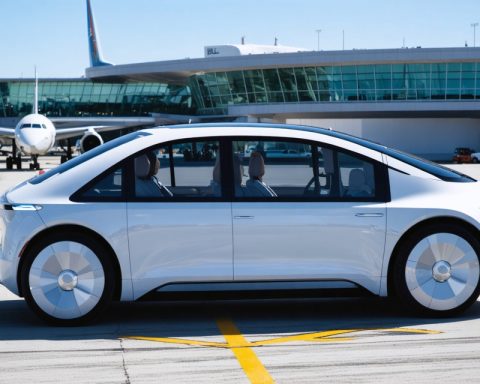- The EV onboard battery charger market is anticipated to grow from $4.4 billion in 2023 to $13.44 billion by 2030.
- Onboard chargers are essential for converting alternating current to battery-feeding direct current in electric vehicles.
- Bidirectional charging capabilities are emerging, enabling vehicles to supply energy back to the grid with concepts like vehicle-to-home (V2H) and vehicle-to-load (V2L).
- Key industry players, such as Bel Fuse Inc. and Toyota Industries, drive market growth through strategic collaborations and technological advances.
- Asia Pacific leads the market, capturing over 40% of global revenue, with China as a major contributor.
- Europe and North America are advancing through stringent emissions policies, tech investments, and enhanced infrastructure.
- Countries like Thailand and Vietnam are leveraging strategic investments for a future in electric mobility.
https://youtube.com/watch?v=JDDrFHrod2I
The world of electric vehicles is undergoing a transformation as the global market for EV onboard battery chargers accelerates towards a remarkable evolution. From sleek sedans cruising city streets to rugged SUVs adventuring off-road, the shift to electric is not just about vehicles. At the heart of this revolution, the EV onboard battery charger plays an instrumental role, set to amplify its market influence from $4.4 billion in 2023 to a staggering $13.44 billion by 2030.
Strap in for this electrifying journey, where the engine of change lies in the burgeoning demand for electric cars, cutting-edge charging technologies, and robust governmental backing. Picture a world where convenience meets innovation, thanks to onboard chargers that convert alternating current into the battery-feeding direct current—akin to an invisible dance making every journey possible. Throw into this mix the advent of bidirectional charging, empowering electric vehicles with the ability to not just take energy from the grid, but also supply energy back—bringing notions like vehicle-to-home (V2H) and vehicle-to-load (V2L) from sci-fi into our very households.
With dominant players like Bel Fuse Inc. and Toyota Industries steering the competitive landscape, the focus is keen on synergy through strategies encompassing mergers, astonishing technological advances, and strategic collaborations. And it’s not just companies—entire continents are getting in on the action. Asia Pacific, fueled by China’s unstoppable charge, already rakes in over 40% of global revenue and paves the road for others to follow.
Yet, this global tapestry is woven with vibrant strands beyond Asia. Europe’s stringent emissions policies and visionary tech investments are fostering fertile ground, and in North America, innovations and giant leaps in infrastructure signal a green dawn. Countries like Thailand and Vietnam are harnessing strategic investments and governmental vision to carve their niche in this electric wonderland.
In a vivid future where Singapore’s skyline flashes with electric chargers and Vietnam builds roads for electric mobility maestros, the world inches closer to sustainable transportation. Onboard chargers stand as silent sentinels in this sea of change—integral, transformative, and pivotal in steering the quest for a cleaner, smarter future.
As you witness this electrifying epoch unfold, remember the formidable role of onboard chargers. They are not just components; they represent a symbolic charge towards a bold, electrified future—driving us towards a world where every journey is not just a trip, but a testament to innovation.
The Future of EV Onboard Chargers: Beyond the Horizon of Innovation
Introduction
The electric vehicle (EV) landscape is rapidly evolving, with the onboard battery charger emerging as a crucial player in this transformation. Expected to grow from $4.4 billion in 2023 to $13.44 billion by 2030, the onboard charger market is driven by increased demand for EVs, advancements in charging technologies, and strong governmental support. This article delves deeper into the world of EV onboard chargers, exploring trends, innovations, and strategic moves shaping this dynamic sector.
EV Onboard Chargers: Key Functions and Innovations
An onboard charger converts alternating current (AC) from the grid into direct current (DC) to charge the EV battery. Recent innovations include:
– Bidirectional Charging: This allows EVs to send energy back to the grid, enabling vehicle-to-home (V2H) and vehicle-to-load (V2L) applications. This technology enhances energy management and provides backup power during outages.
– Wireless Charging: Emerging as a convenient alternative, wireless charging enables hassle-free power transfer without the need for physical connectors.
Market Trends and Forecasts
– Booming EV Sales: The rise in EV adoption is directly influencing onboard charger demand. Countries like China dominate the market with their rapid EV production and sales.
– Technological Advances: Integration with smart grids and IoT (Internet of Things) improves efficiency and responsiveness, reflecting a shift towards interconnected transportation ecosystems.
– Government Initiatives: Policies promoting green transportation play a pivotal role. For instance, European emissions regulations and US infrastructure investments are propelling market growth.
Regional Insights
– Asia Pacific: As the leading revenue-generating region, Asia Pacific’s growth is driven by China’s innovation in battery technologies and efficient supply chains.
– Europe: Strong policy measures and financial backing for EV infrastructure foster an encouraging environment for onboard charger advancements.
– North America: Investment in R&D and sustainable energy practices are expanding the onboard charger market in the US and Canada.
Industry Challenges and Limitations
Despite its potential, the onboard charger market faces several obstacles:
– Infrastructure Gaps: Insufficient charging stations can hinder EV growth.
– Technological Complexity: Integration with diverse EV models and energy systems presents technical challenges.
– High Costs: Advanced onboard charging systems can increase overall vehicle costs, affecting affordability.
Actionable Recommendations
1. Investment in Infrastructure: Prioritize developing widespread and accessible charging networks.
2. Innovation in Affordability: Focus on reducing production costs for onboard chargers to lower entry barriers for EVs.
3. Partnerships for Progress: Encourage collaboration between technology firms and automotive manufacturers to drive coherent innovation.
Conclusion
EV onboard battery chargers are at the core of the electric revolution, symbolizing the drive toward a sustainable future. By addressing current challenges and embracing cutting-edge technologies, stakeholders can ensure that the onboard charger market not only thrives but also guides us toward a cleaner, more efficient transportation paradigm.
For further insights into developments in the electric vehicle world, visit Toyota Industries and Bel Fuse Inc..









